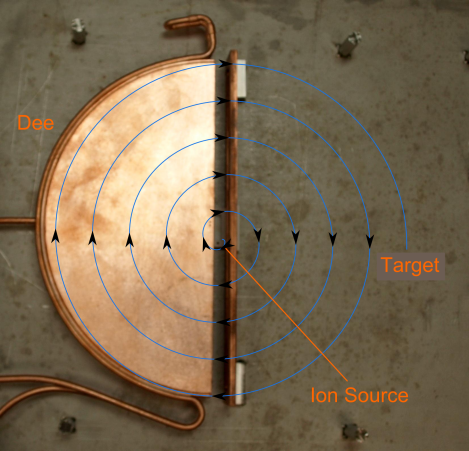A cyclotron is a compact type of particle accelerator that accelerates subatomic particles with a combination of carefully arranged electric and magnetic fields. Once the particles reach very high speeds, they are steered into a metal target. The resulting collisions produce showers of radiation that provide clues about the nature of the atoms involved.
The particles to be accelerated in the cyclotron are produced in the center of the chamber by the ion source. Once these protons enter the chamber, they are pulled towards the D-shaped electrode (the “dee”) which is negatively charged. However, just as they reach the dee a voltage is applied to change the dee’s charge from negative to positive. The protons are now pushed back away from the dee until the dee’s charge changes again. This process repeats again and again, each time pushing the protons slightly faster.
A powerful magnetic field that covers the entire chamber forces the protons to follow curved paths. This causes the beam to spiral outwards as it gains energy so that it does not overlap with itself. After several hundred revolutions the protons reach the target and can be used for experiments. By this point they will be moving at approximately 7% of the speed of light.
